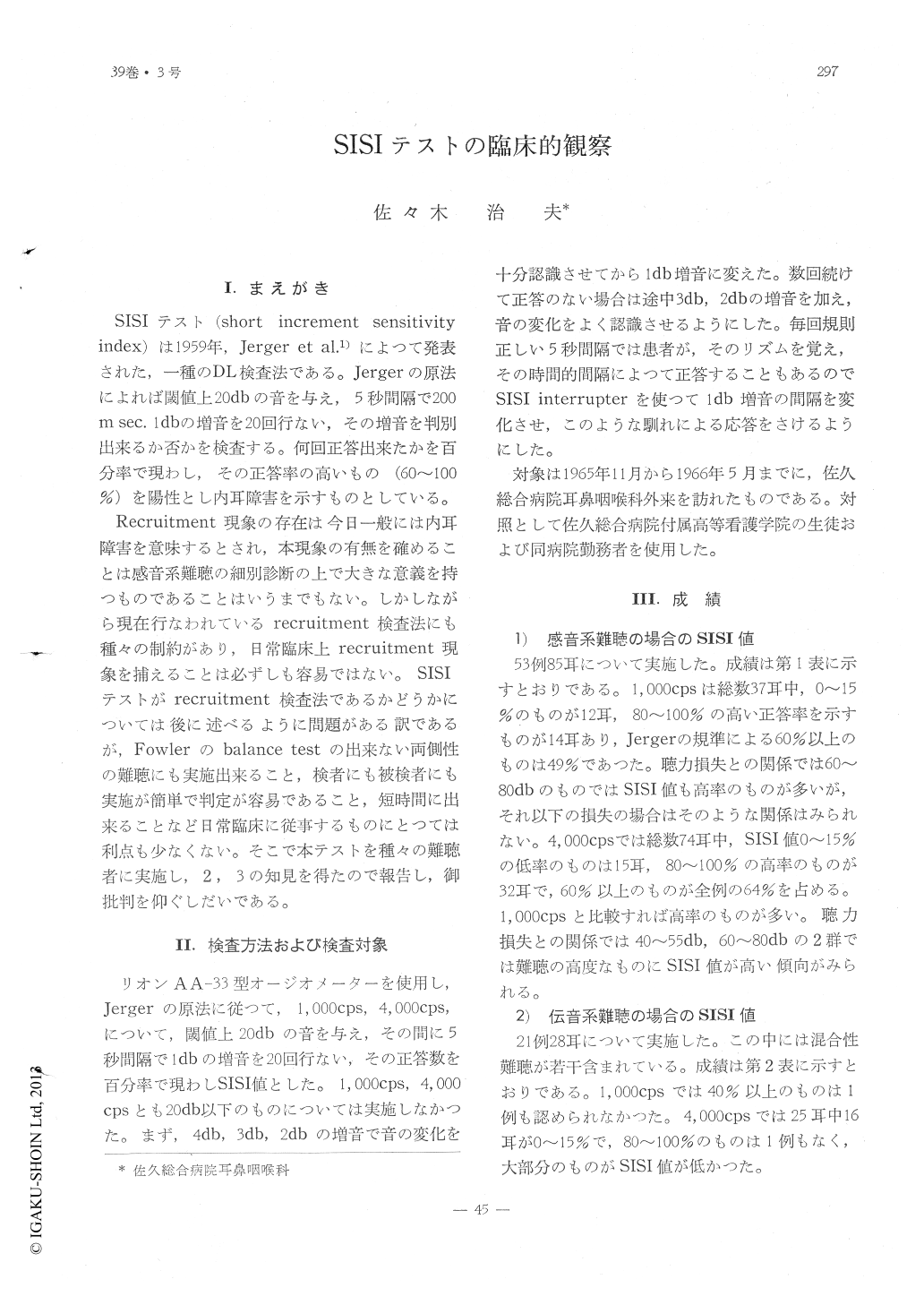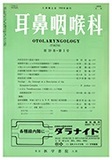Japanese
English
- 有料閲覧
- Abstract 文献概要
- 1ページ目 Look Inside
Ⅰ.まえがき
SISIテスト(short increment sensitivityindex)は1959年,Jerger et al.1)によつて発表された,一種のDL検査法である。Jergerの原法によれば閾値上20dbの音を与え,5秒間隔で200m sec.1dbの増音を20回行ない,その増音を判別出来るか否かを検査する。何回正答出来たかを百分率で現わし,その正答率の高いもの(60〜100%)を陽性とし内耳障害を示すものとしている。
Recruitment現象の存在は今日一般には内耳障害を意味するとされ,本現象の有無を確めることは感音系難聴の細別診断の上で大きな意義を持つものであることはいうまでもない。しかしながら現在行なわれているrecruitment検査法にも種々の制約があり,日常臨床上recruitment現象を捕えることは必ずしも容易ではない。SISIテストがrecruitment検査法であるかどうかについては後に述べるように問題がある訳であるが,Fowlerのbalance testの出来ない両側性の難聴にも実施出来ること,検者にも被検者にも実施が簡単で判定が容易であること,短時間に出来ることなど日常臨床に従事するものにとつては利点も少なくない。そこで本テストを種々の難聴者に実施し,2,3の知見を得たので報告し,御批判を仰ぐしだいである。
Following Jerger's method SISI test (short increment sensitivity index) was made on number of ears both, those of normal and that of impaired hearing. At 1,000 cps the number of those showing 0~15% SISI was equal to those showing 80~100%. Those rating more than 60% SISI numbered no more than 49% of the total number tested but, at 4,000 cps SISI 60% or more numbered as many as 64% of the total and, in general, they appeared to be much higher in the latter cycle as compared to those at 1,000 cps. Those showing the high rate of 80~100% were not seen in ears affected with nerve deafness but, among those deafnesses due to Ménière's disease, streptomycin or kanamycin toxicity, many showed higher rates.

Copyright © 1967, Igaku-Shoin Ltd. All rights reserved.


